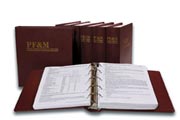 |
 |
 |
|
PF&M at a Glance Recreational vehicles The standard personal auto policy (PAP) is quite flexible. It readily responds to losses for a variety of vehicles such as subcompacts, coupes, sedans, wagons, pick-ups, minivans, hybrids, SUVs, crossovers, full-sized vans and certain types of trailers. The policy is a viable option for any such vehicles that face personal, as opposed to business, exposures. While adaptable for covering several vehicle types, the PAP is not suited for every automotive situation, even when it involves strictly personal use. For instance, the PAP is not designed to handle vehicles that do not have four wheels (although the policy can be modified by endorsement to broaden the type of covered vehicles). The PAP does not apply to all types of trailers, and it does not permit significant coverage for vehicles designed for off-road operation. Further, it provides only limited coverage for vehicle accessories and contents. In other words, there are enough coverage gaps that other sources of protection are necessary. Coverage alternatives vary for recreational vehicles along the same lines as the vehicles themselves. A broad array of motorcycle coverage is available for scooters and motorbikes up to trail bikes and fully loaded, high-powered motorcycles. Separate policies may be purchased for off-road vehicles, including dirt bikes, crawler/tread-powered vehicles, all-terrain cycles (three-wheeled) or ATVs (four-wheeled), etc. For off-road vehicles with less power (such as golf carts and motorized vehicles for very young children), it is more typical that a homeowners policy be endorsed to handle the additional liability. When considering recreational vehicles, you should be aware that this category of vehicles is composed of different types. They vary from non-motorized units that are towed behind vehicles, units that are attached as components of other motorized units (pick-up trucks) and self-contained, self-powered units. Recreational vehicles (RVs) include a variety of vehicles that typically are covered by a separate policy. RV commonly refers to vehicles or trailers that combine an owner/user’s transport needs with his or her residence needs. So, this vehicle family increases the level of residential, personal property being transported by an insured. Their use also includes a higher level of premises liability than is contemplated by a standard automobile policy. RV types include several trailer classes (travel, fifth-wheel and fold-downs), motor homes (in several classes), truck campers, and conversions (both vans and buses). RVs are used for simple, short-range day trips to weekend overnights, through to extended, long-range travel. Trailer types vary substantially in size and must be towed by a separate vehicle. Trailers usually include some level of cooking and sleeping facilities. They may be small and easily towed by even a small car, or they may be large enough that they require being transported by heavy-duty, customized trucks or SUVs. Larger trailers may include major appliances and bedding facilities. Trailers may include tents, awnings and other property that provides residential space at a temporary location. Motor homes and conversions represent the biggest combination of auto and home exposure. Such vehicles can exceed 40 feet in length, are wider than standard personal use vehicles and are often capable of expansion (via components called sideouts) when located at a site. Larger motor homes may have a complement of appliances, dining and sleeping furnishings that rival a home. Like a home, some units may contain nearly full-sized and equipped kitchens, dining areas, baths and bedrooms. Unlike a home, all of the furnishings are subject to every hazard of the road. The higher, distinct exposure makes such vehicles more suited to RV policy coverage. These policies include rating and features that are better suited to properly cover rolling residences and their related contents and custom vehicle features. Underwriting the policies requires consideration of the vehicles, their value, performance capability, custom features, power, size, range of use, garaging situation and the driving as well as maintenance acumen of their users and owners. * |
|
|||||||||||||
| ||||||||||||||
